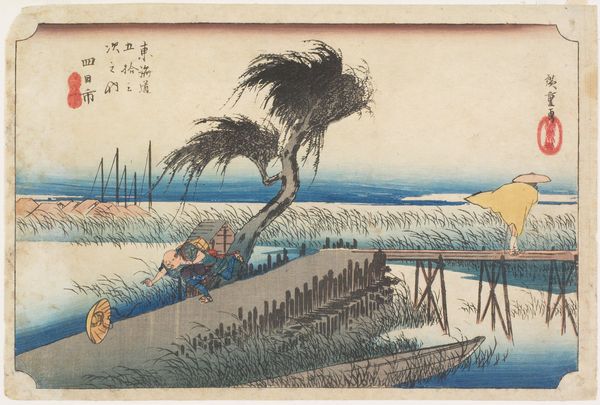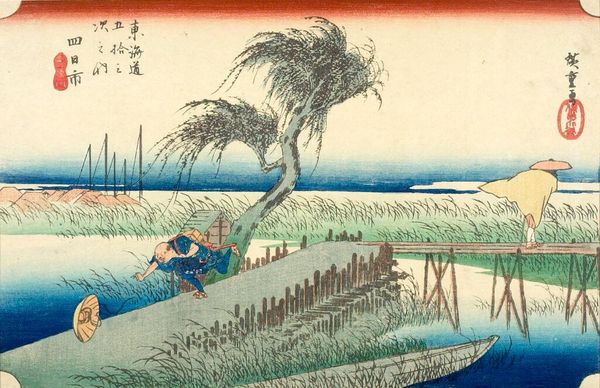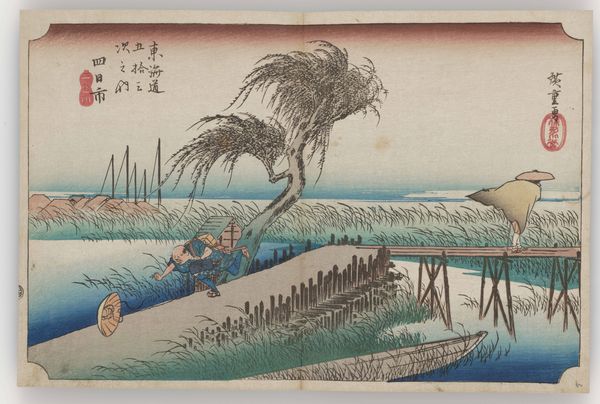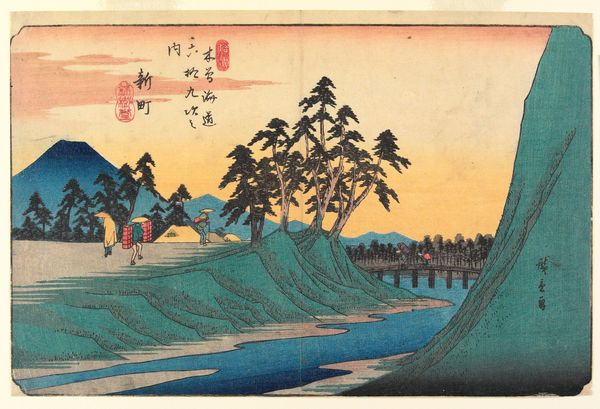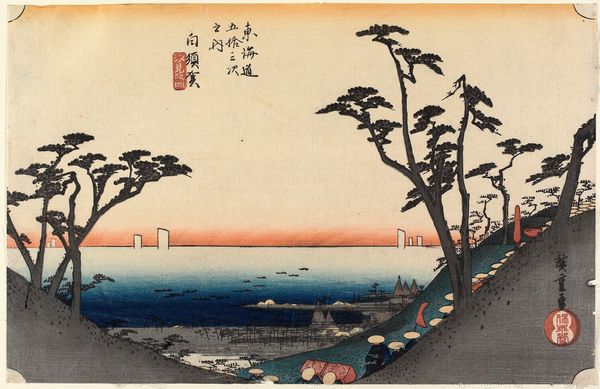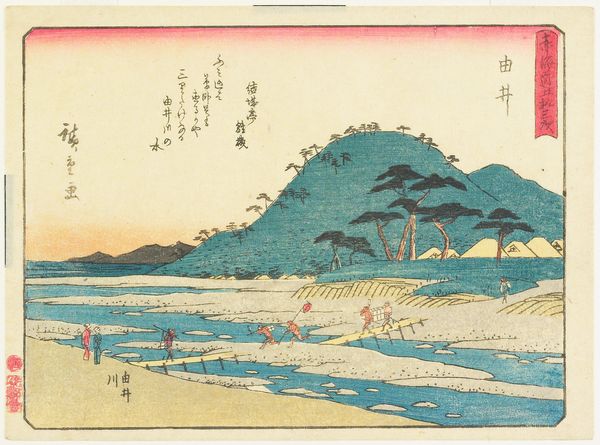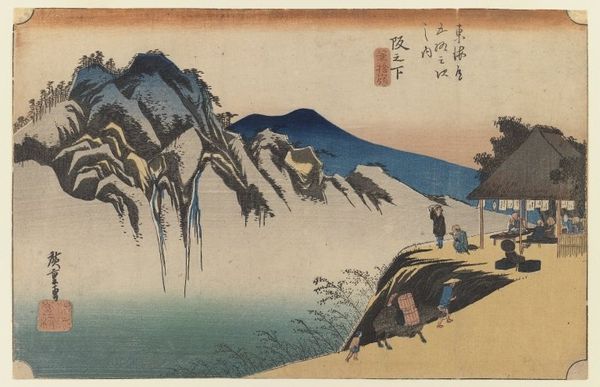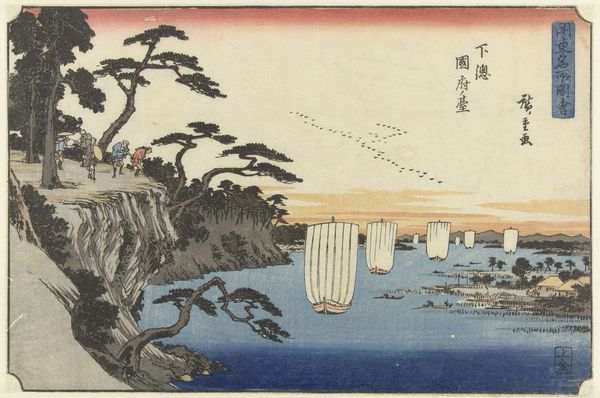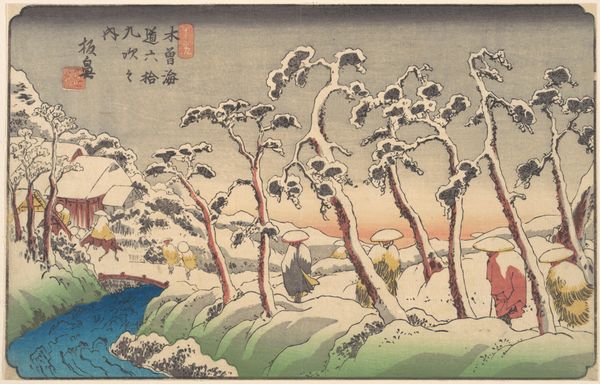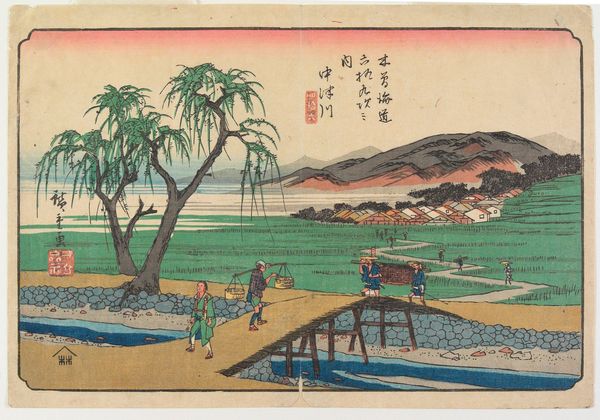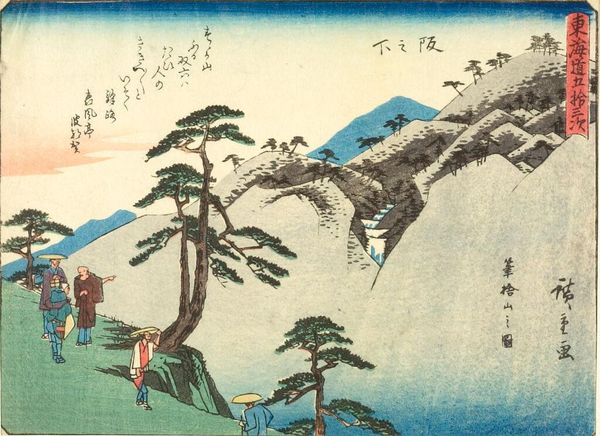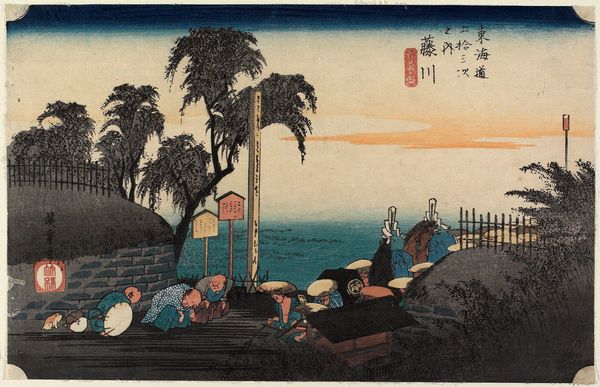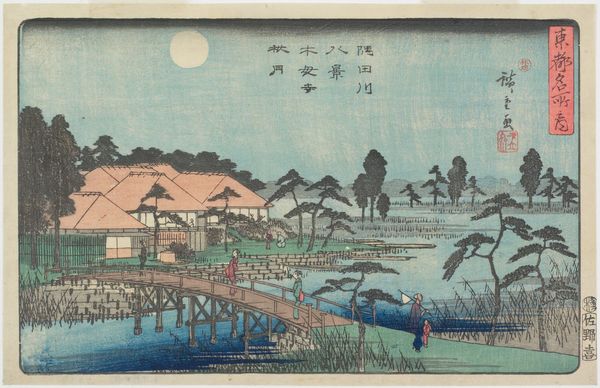
print, ink
# print
#
landscape
#
ukiyo-e
#
japan
#
ink
Dimensions: 8 7/8 × 13 3/4 in. (22.5 × 34.9 cm) (image, sheet, horizontal ōban)
Copyright: Public Domain
Curator: Utagawa Hiroshige's "Yokkaichi," created around 1832-1833, part of the "Fifty-three Stations of the Tokaido" series. The work, rendered in ink on paper, depicts a scene along the famous route. Editor: My first impression is a sense of precariousness. The figures seem buffeted by a strong wind, emphasizing a transient moment. The very materiality suggests an intimate scale, portable and reproducible for wide circulation. Curator: That's perceptive. This series highlights how landscape prints became central to the era's burgeoning travel industry and reshaped the Japanese vision of its own geography. Editor: It is quite compelling how he's used woodblock printing to capture a landscape not just pictorially, but to convey its palpable feeling. Note the bent tree and leaning traveler; Hiroshige understood how to use the labor-intensive carving process to achieve this level of expressiveness. Curator: The image presents the hardships and dynamism of travel—note the way the figure struggles against the wind. Beyond artistic choices, these prints served as crucial souvenirs, reinforcing narratives around imperial identity and consolidating regional visibility in the Tokugawa Shogunate. Editor: Absolutely. And there's a contrast here: we see natural vulnerability—the weather's effect on people, weighed against constructed passage–bridges, canals that have changed the physical geography of the locale itself. It also highlights a material and labor cost that we may have once overlooked with our modern preconceptions about mass production and distribution. Curator: Indeed, that bridge subtly brings the tension into focus: it is both facilitating and impeding movement due to the wind's force. Editor: By focusing on material conditions, one recognizes how printmaking democratized the consumption of art and opened avenues for cultural exchanges. I have become increasingly attuned to such elements. Curator: Analyzing the cultural and historical context provides a far richer, more layered reading of the piece, expanding beyond pure aesthetics into meaningful storytelling about travel and societal conditions. Editor: Reflecting on this print, I value Hiroshige's understanding of place conveyed through its intrinsic materiality: the combined effects create a tangible sensory experience through the layering and transfer of pigment to the paper.
Comments
No comments
Be the first to comment and join the conversation on the ultimate creative platform.
